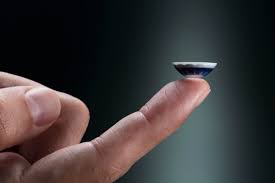
Breaking News
 Victor Davis Hanson: What the Media Won't Tell You About John Bolton FBI Raid
Victor Davis Hanson: What the Media Won't Tell You About John Bolton FBI Raid
 Giving Ukraine a US Security Guarantee Risks National Suicide
Giving Ukraine a US Security Guarantee Risks National Suicide
 The Oklahoma City Bombing: A Lesson in Government Lawlessness
The Oklahoma City Bombing: A Lesson in Government Lawlessness
 The Insurrection Act – Can the POTUS Deploy the National Guard to America's Cities?
The Insurrection Act – Can the POTUS Deploy the National Guard to America's Cities?
Top Tech News
 NVIDIA just announced the T5000 robot brain microprocessor that can power TERMINATORS
NVIDIA just announced the T5000 robot brain microprocessor that can power TERMINATORS
 Two-story family home was 3D-printed in just 18 hours
Two-story family home was 3D-printed in just 18 hours
 This Hypersonic Space Plane Will Fly From London to N.Y.C. in an Hour
This Hypersonic Space Plane Will Fly From London to N.Y.C. in an Hour
 Magnetic Fields Reshape the Movement of Sound Waves in a Stunning Discovery
Magnetic Fields Reshape the Movement of Sound Waves in a Stunning Discovery
 There are studies that have shown that there is a peptide that can completely regenerate nerves
There are studies that have shown that there is a peptide that can completely regenerate nerves
 Swedish startup unveils Starlink alternative - that Musk can't switch off
Swedish startup unveils Starlink alternative - that Musk can't switch off
 Video Games At 30,000 Feet? Starlink's Airline Rollout Is Making It Reality
Video Games At 30,000 Feet? Starlink's Airline Rollout Is Making It Reality
 Automating Pregnancy through Robot Surrogates
Automating Pregnancy through Robot Surrogates
 Grok 4 Vending Machine Win, Stealth Grok 4 coding Leading to Possible AGI with Grok 5
Grok 4 Vending Machine Win, Stealth Grok 4 coding Leading to Possible AGI with Grok 5
The Display of the Future Might Be in Your Contact Lens

A glance to the left. A flick to the right. As my eyes flitted around the room, I moved through a virtual interface only visible to me—scrolling through a calendar, commute times home, and even controlling music playback. It's all I theoretically need to do to use Mojo Lens, a smart contact lens coming from a company called Mojo Vision.
The California-based company, which has been quiet about what it's been working on for five years, has finally shared its plan for the world's "first true smart contact lens." But let's be clear: This is not a product you'll see on store shelves next autumn. It's in the research and development phase—a few years away from becoming a real product. In fact, the demos I tried did not even involve me plopping on a contact lens—they used virtual reality headsets and held up bulky prototypes to my eye, as though I was Sherlock Holmes with a magnifying glass.

 HERE COMES THE MOTHERSHIP
HERE COMES THE MOTHERSHIP

